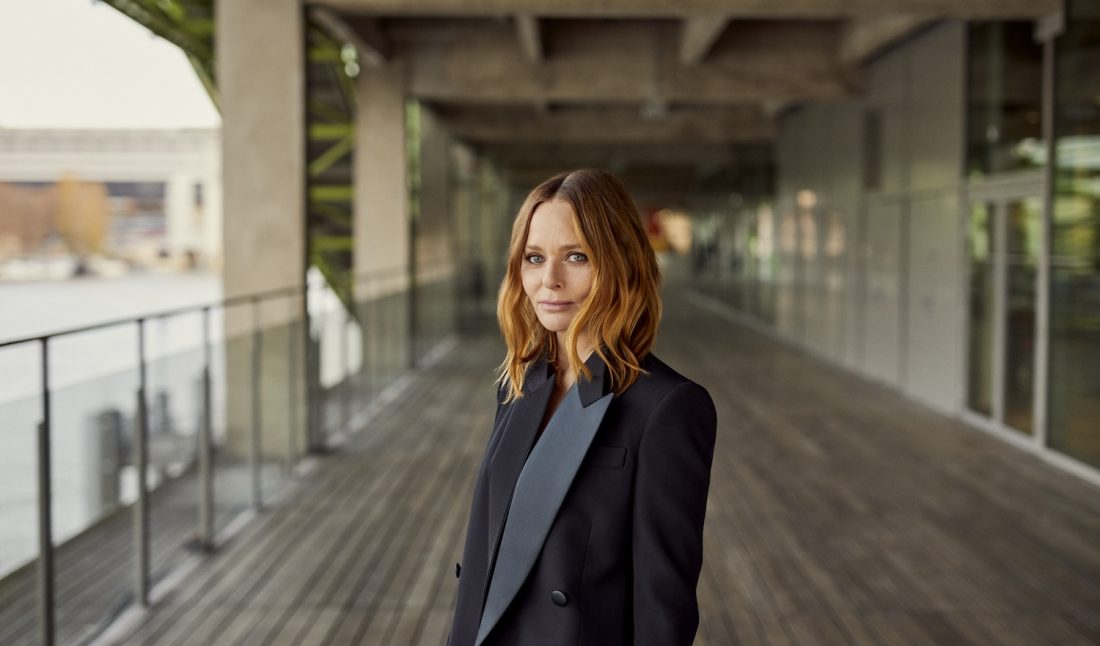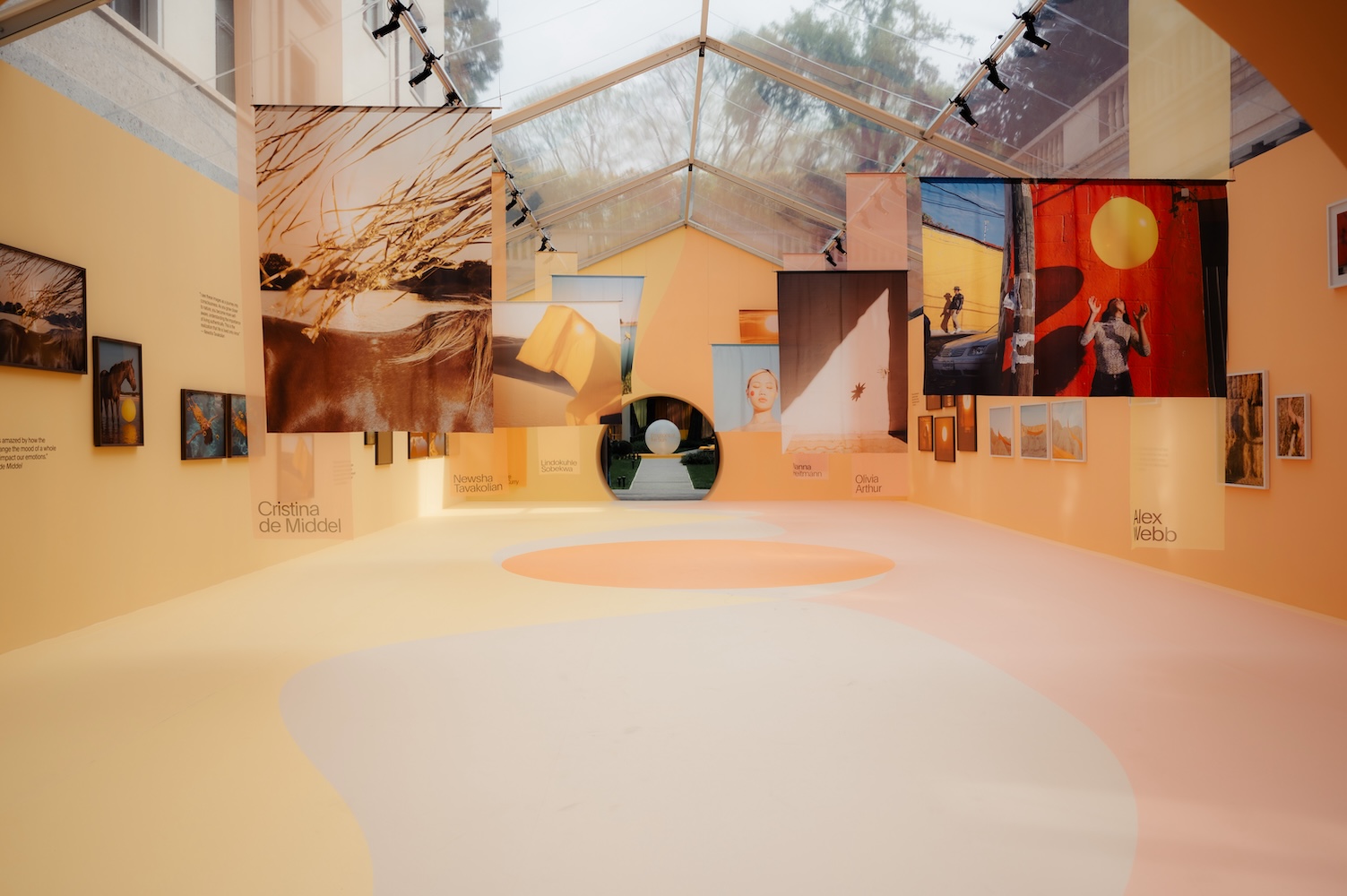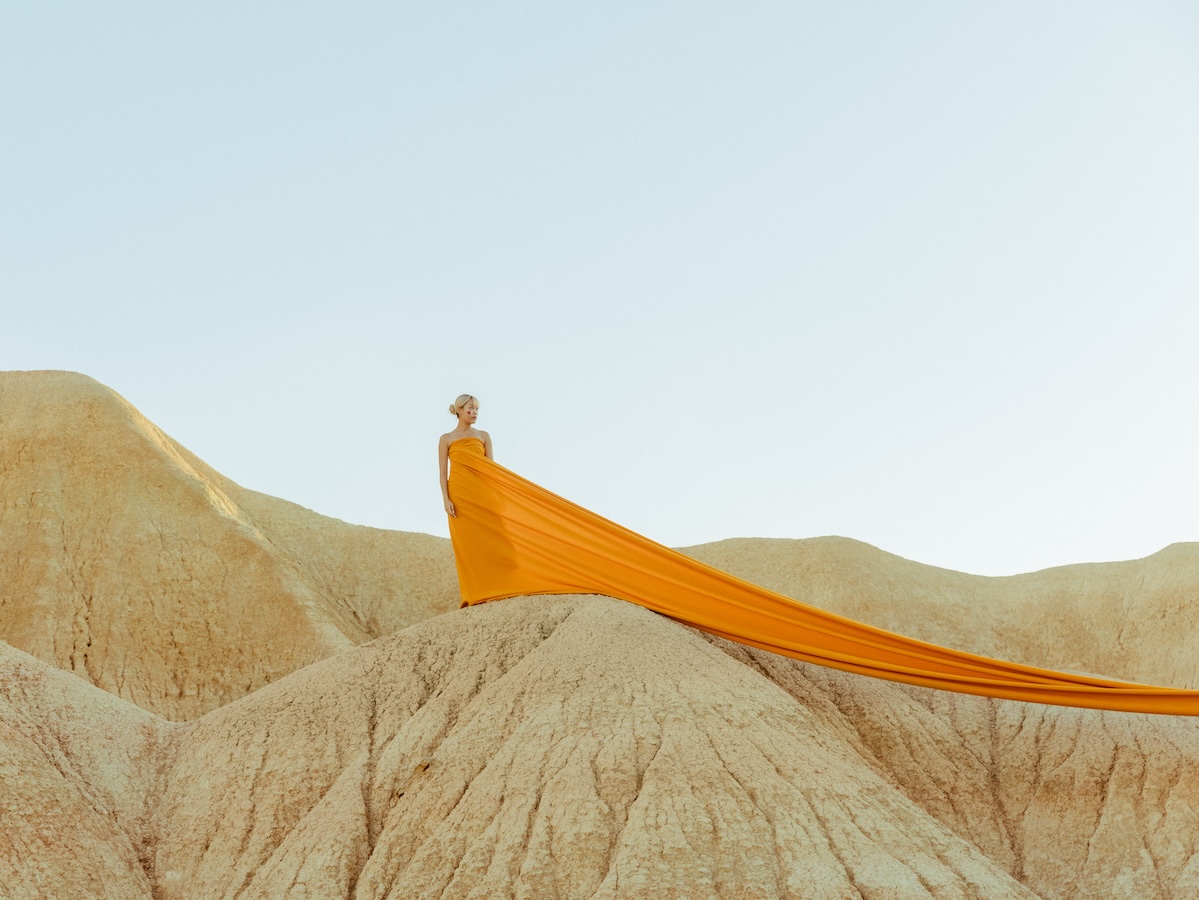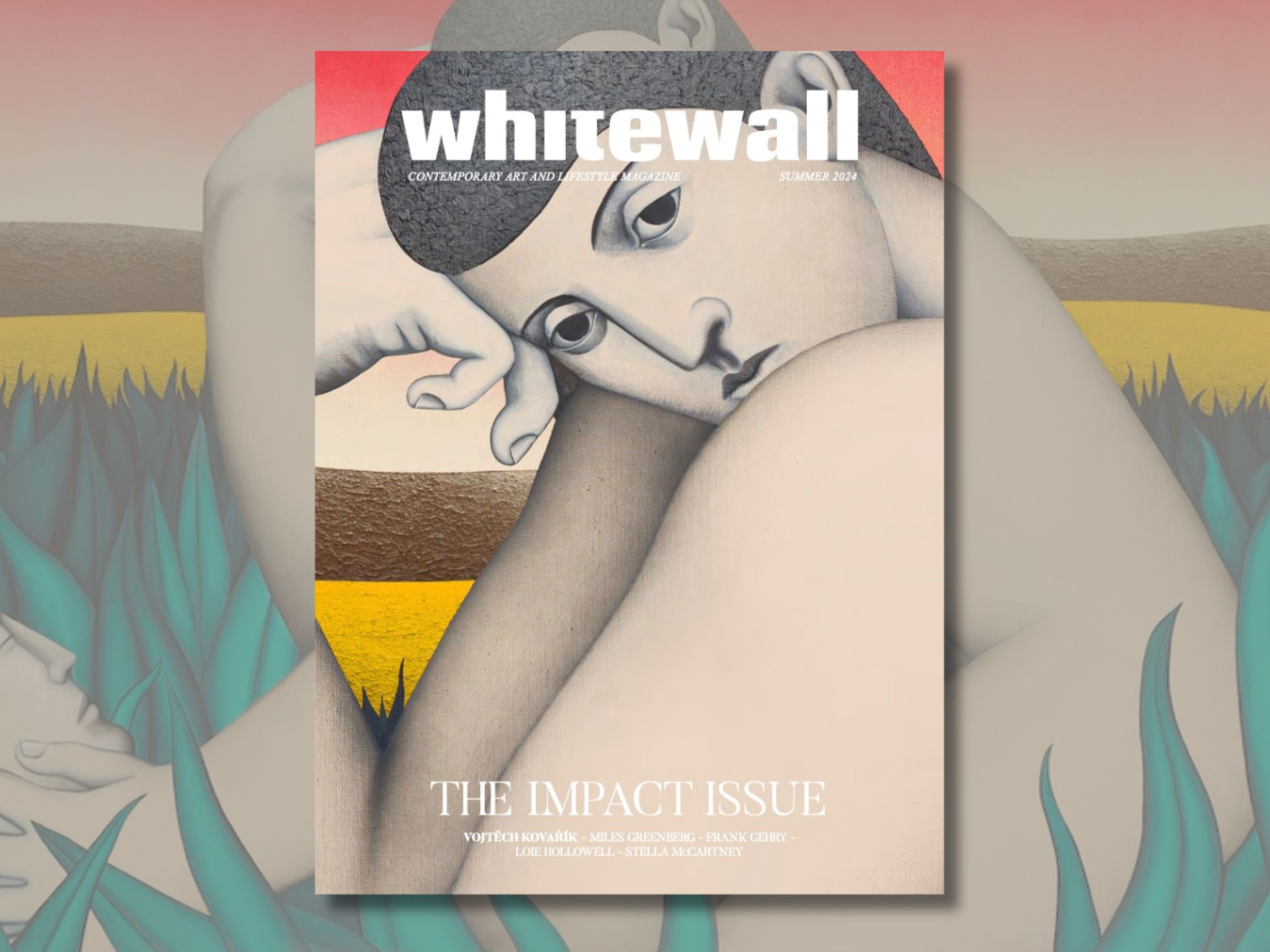Stella McCartney has been invested in sustainability for decades, long before the word even entered broader conversations in the fashion industry. For a time, McCartney was alone (an “eco weirdo,” according to some!) in an industry that churns out new styles at an incomprehensible ethical cost. Now, as the industry has finally started to catch on, she is still several paces ahead, maintaining her place at the absolute forefront of innovative and regenerative practices.
In partnership with Veuve Clicquot, Stella McCartney has created a line with VEGEA, a grape-based alternative to leather. Their new line repurposes grape waste from the Veuve Clicquot vineyards in Reims, France, and transforms them into a luxurious leather-like material, through a process that took over a year to refine. The new range of products plays with the aesthetics of the vineyard—basket-woven bucket bags, for example—that, paired with the knowledge that they are cruelty-free, makes them genuinely bucolic and fanciful. We caught up with McCartney, to learn more about how she harmonizes sustainability and desirability, her own design principles—and how grape by-product became the next big thing in fashion.
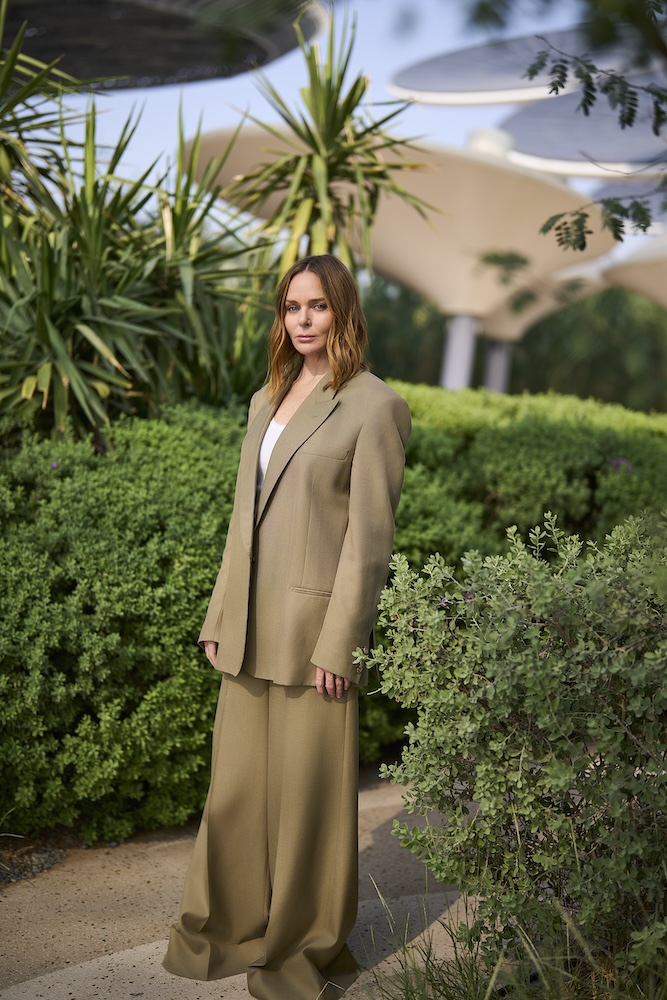 Stella McCartney, portrait courtesy of Stella McCartney x Veuve Clicquot.
Stella McCartney, portrait courtesy of Stella McCartney x Veuve Clicquot.
WHITEWALL: To start, how did your partnership with Veuve Clicquot begin?
STELLA MCCARTNEY: When I partnered with LVMH and became a special advisor on sustainability to Monsieur Arnault in 2019, I immediately saw a huge opportunity being connected with a champagne house like Veuve Clicquot. I had already started pioneering grape-based vegan alternatives to animal leather, VEGEA, and proposed to them this innovation collaboration—using their harvest by-product to create the next generation of cruelty-free materials. Did you know the wine industry produces over 12 million tons of grape waste annually? Or that one billion animals die for leather every year? We can easily identify the problems, and I am always trying to come forward with better solutions.
Fortunately, in Veuve Clicquot, I have found a partner whose passions for sustainability, innovation, and regenerative practices match my own. By coming together, our goal was to bring these conscious visions into even sharper focus and inspire the next generation of innovators through pioneering a new material, created from the waste of one industry to redefine luxury in another. I love how Madame Clicquot herself was a female pioneer and that the grapes we used for our next-gen alternative to leather actually came from the vineyard in Reims, France, that she purchased around two hundred years ago. VEGEA partnered with us and Veuve Clicquot on this collaboration, which helped us to create the material in 15 months. They share our vision of making the most luxurious products with the lowest impact on the planet. Our alternative is made with 80 percent vegetal, renewable, and recycled raw elements. It truly is the future of fashion.
VEGEA at the Heart of Next-Gen Leather Alternatives
WW: At the heart of your collaboration is VEGEA, your next-gen leather alternative. When and how did you start imagining that grape stems could be repurposed in this way?
SM: I had already been working with the innovators at VEGEA on a grape-based vegan alternative to animal leather using waste from the Italian wine industry. Being part of the LVMH Group and knowing that one our fellow maisons was a champagne house, it felt the spark of inspiration and innovation. I imagined we could use Veuve Clicquot’s grape by-product from their vineyards in Reims, which I soon after learned are regeneratively farmed—a practice we are also so committed to here at Stella with our sourcing of cotton and wool.
WW: In addition to the technical skill required to develop this material, the entire process of production is solvent-free, metal-free, and free of toxins. How did you go about refining the process of production?
SM: Innovation is not an easy route. It takes a huge investment of time and funds. The VEGEA we pioneered with Veuve Clicquot took 15 months of tests and trials to refine and formulate. I am so proud of how we have co-created a luxurious, cruelty-free alternative to animal leather without engaging in the impactful practices of traditional animal leather production.
Our vegan alternative sits on a Global Recycling Standard (GRS)–certified recycled polyester backing and contains a water-based polyurethane, which further reduces our use of virgin materials by using recycled materials. I am also proud to say it is made with more than 70 percent renewable products. This is the embodiment of my vision here at Stella, which is an iconic luxury item that does not harm a single creature, is more mindful of Mother Earth, and honestly, can you tell the difference from leather? I cannot, and it makes me so happy knowing that we are helping to save some of the over one billion animals that die needlessly every year just for their skins.
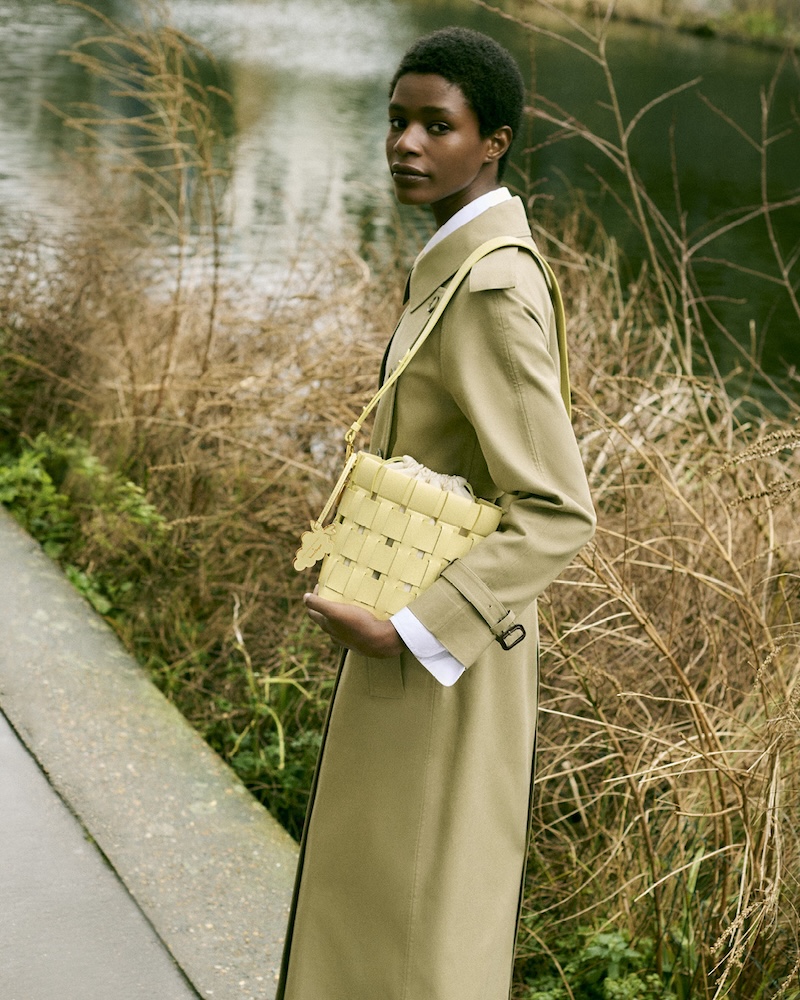 Frayme Veuve Clicquot Bucket Bag, Stella McCartney x Veuve Clicquot.
Frayme Veuve Clicquot Bucket Bag, Stella McCartney x Veuve Clicquot.
“Innovation is not an easy route. It takes a huge investment of time and funds,”
Stella McCartney
WW: The designs riff on classic Stella McCartney styles and seem to pay homage, aesthetically, to grapevines and bucolic baskets one might find in the countryside. Can you tell us about designing the accessories?
SM: I loved the idea of our iconic Frayme bags being woven almost like a fruit basket, which felt like such a fun Stella nod to the Veuve Clicquot grapes in our pioneering vegan alternative to leather. Weaving also requires a high level of craftsmanship and thought, much like our innovations. It just felt natural.
WW: More broadly, you have pioneered a sustainable approach to fashion for decades, at a time when no one else was doing so. How has your approach to and understanding of ethical fashion evolved since you launched your fashion house?
SM: I was raised by two of the world’s most prominent vegetarians and animal rights activists, so using leather and fur was never something I was going to do. When I launched Stella in 2001, people called me an “eco weirdo”! After I learned about the UN’s Livestock’s Long Shadow Report in 2006, which connected the animal agriculture—where leather comes from—to climate change, sustainability became part of my ethos. As I read and discovered more, I realized you cannot have sustainability without innovation, and that has sparked the journey I am on today: investing in the next generation of sustainable visionaries, both through my fashion house and SOS Fund; a $200 million investment fund I co-founded. I am very open about the conscious materials I use in the hopes that others will follow in my lead, and we can effect positive change at an industry level . . . and beyond.
“You cannot have sustainability without innovation,”
Stella McCartney
WW: Early in your career, what was it like innovating in that way, when I imagine there was little infrastructure for doing so?
SM: Endless bloody meetings! To be honest, I loved it. Back then, there weren’t many suppliers doing beautiful, luxurious vegan alternatives to leather and fur, so it was a lot of very hands-on work connecting with those who did exist and collaborating closely with them on getting their materials to where we needed them to be, which was at the same level or even better than animal products. I wish I could go back and show my past self the incredible innovations we are helping to pioneer today.
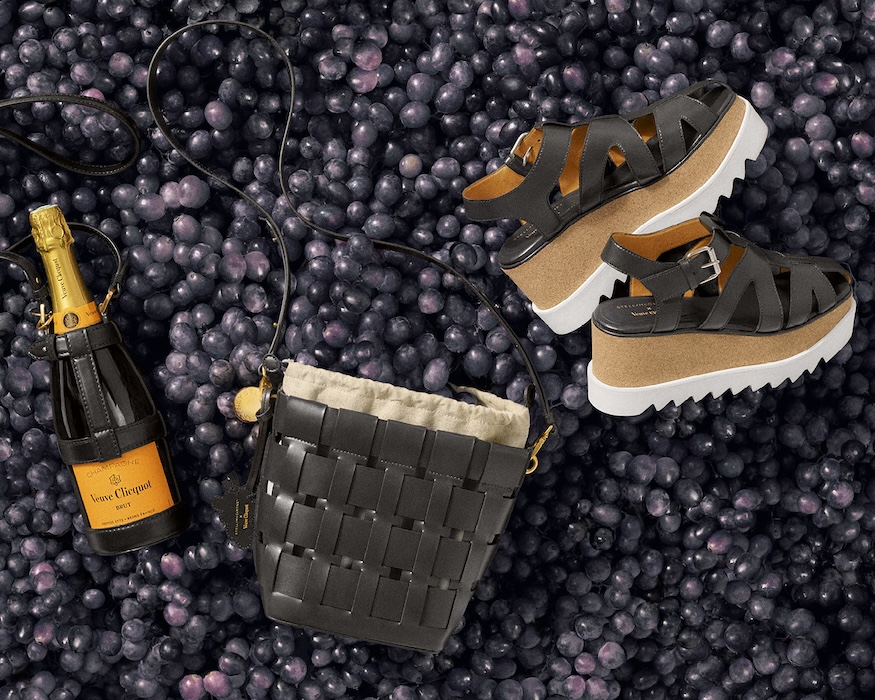 The Stella McCartney x Veuve Clicquot Bottle Holder, Elyse Veuve Clicquot Platform Sandals, and Frayme Veuve Clicquot Bucket Bag, courtesy of Stella McCartney x Veuve Clicquot.
The Stella McCartney x Veuve Clicquot Bottle Holder, Elyse Veuve Clicquot Platform Sandals, and Frayme Veuve Clicquot Bucket Bag, courtesy of Stella McCartney x Veuve Clicquot.
Stella McCartney’s Personal Fashion Archive and Brand Ethos
WW: In addition to your revolutionary commitment to the environment, you have consistently designed clothes that women want to wear and that reflect a nuanced view of femininity. What is your typical creative approach in the studio? How do you get started?
SM: My approach to design always begins with my parents. They had a shared wardrobe of timeless and tailored pieces from Savile Row that they would wear interchangeably. Some of my earliest memories are sitting and looking up at those pieces; that was where my dream of being a fashion designer began. Also, it’s no secret that I design pieces that I would want to wear or have worn, so you will often see an element of my personal archive. I love the idea of making ageless staples that can be worn over and over again, across generations, and that now my children want to borrow from me.
WW: In addition to brand and institutional collaborations, you have been a frequent collaborator with individuals, from Taylor Swift to Meghan Markle. How does your creative approach shift or evolve when you’re collaborating, whether with a single person or a larger institution?
SM: I think one benefit of having been around for all these years is we have really strong design codes here at Stella, which we can bring into any collaboration that we do. It becomes a sort of harmony. There are certain things that we do not compromise on, of course, like the use of sustainable materials and innovations. I like to think of it as combining our collaborator’s vision with our values.
WW: How does your brand ethos of sustainability inspire your collections? Do you tend to begin with the designs or the materials?
SM: Design always comes first. I truly believe you need to have a harmony of sustainability and desirability, otherwise nobody will buy your products and the industry will not change. Once we know what we want to make, I task my teams with finding alternatives that have the most elevated luxury quality with the lowest impact on Mother Earth. I want to show people that a better way is possible, one where they can have the timeless and fashionable pieces they want, made from the nature-friendly materials that our planet needs.
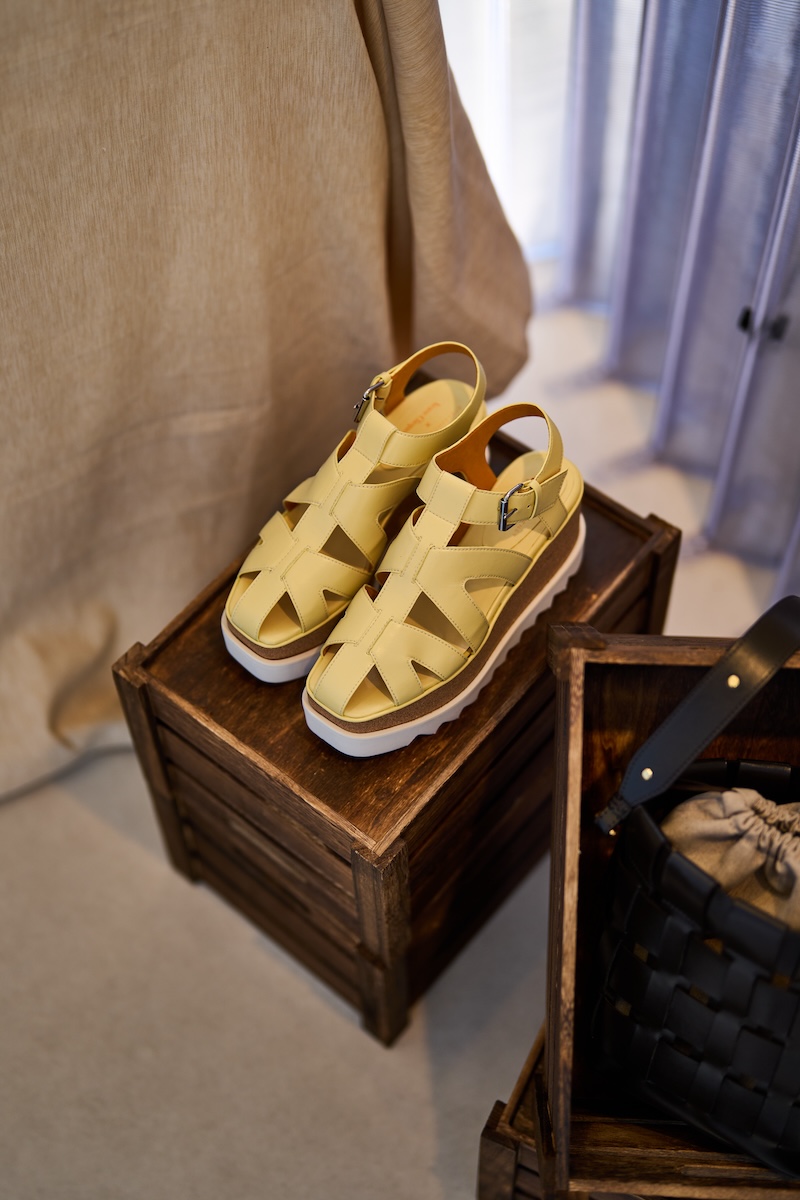 Elyse Veuve Clicquot Platform Sandals, courtesy of Stella McCartney x Veuve Clicquot.
Elyse Veuve Clicquot Platform Sandals, courtesy of Stella McCartney x Veuve Clicquot.
Stella McCartney and Veuve Clicquot Emphasize an Emotional Connection to Nature
WW: You are also, of course, an art collector. What do you look for when you’re collecting?
SM: Anybody who has been in my home or office knows that my taste is quite eclectic. I look for the same things in art as I do in fashion—playfulness, timelessness, and joyfulness, with powerful emotionality and a connection to nature.
WW: Are there artists that you look to for inspiration?
SM: My mum, Linda. Always. She was a pioneering female photographer who was way ahead of her time, in an industry dominated by men—then and now. Sound familiar?
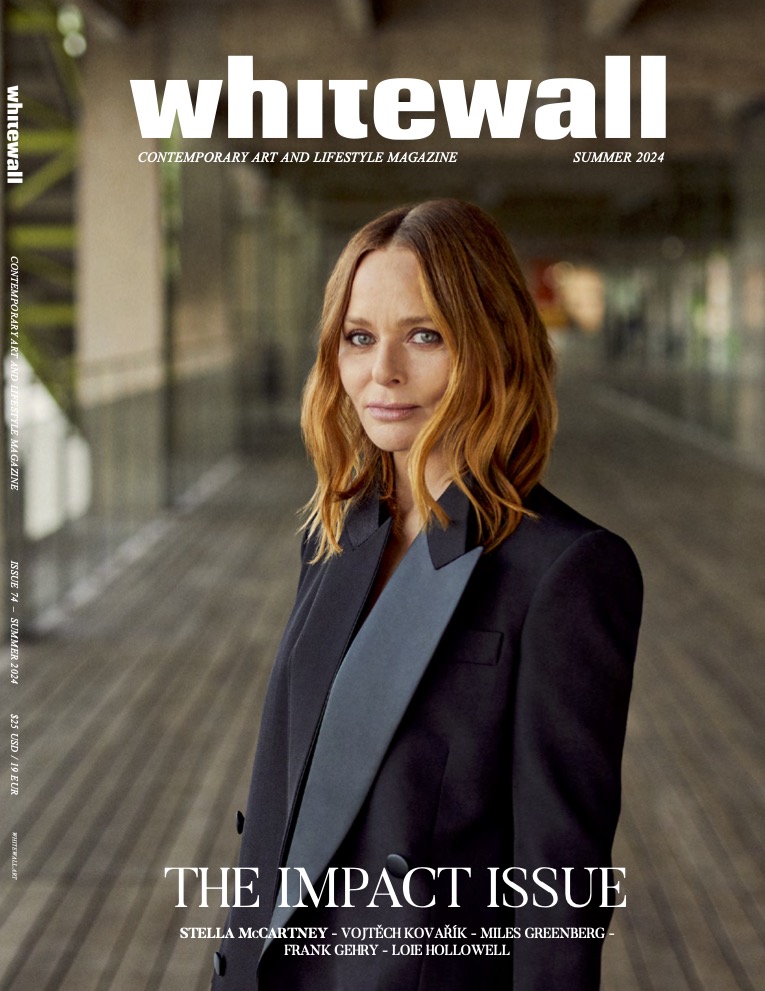 Stell McCartney on the cover of Whitewall’s Summer 2024 Impact Issue.
Stell McCartney on the cover of Whitewall’s Summer 2024 Impact Issue.






